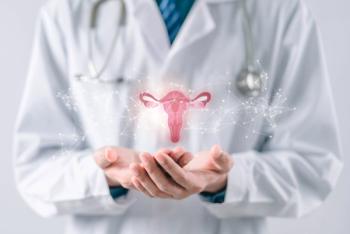
ACOG guidelines at a glance
A commentary on ACOG Practice Bulletin Number 133: Benefits and risks of sterilization
Committee on Practice Bulletins-Gynecology
ACOG Practice Bulletin Number 133: Benefits and Risks of Sterilization, February 2013 (Replaces Practice Bulletin Number 46, September 2003). Obstet Gynecol. 2013;121:392-404. Full text of ACOG Practice Bulletin is available to ACOG members at http://www.acog.org/Resources_And_Publications/Practice_Bulletins/Committee_on_Practice_Bulletins_--_Gynecology/Benefits_and_Risks_of_Sterilization.
Benefits and Risks of Sterilization
Female and male sterilization are both safe and effective methods of permanent contraception used by more than 220 million couples worldwide
(1). Approximately 600,000 tubal occlusions and 200,000 vasectomies are
performed in the United States annually (2–4). For women seeking
permanent contraception, sterilization obviates the need for
user-dependent contraception throughout their reproductive years and
provides an excellent alternative for those with medical
contraindications to reversible methods. The purpose of this document is
to review the evidence for the safety and effectiveness of female
sterilization in comparisonwith male sterilization and other forms of contraception.
Used with permission. Copyright the American College of Obstetricians and Gynecologists.
COMMENTARY
Benefits and Risks of Sterilization:
Considering all the options
By Paula J. Adams Hillard, MD
Dr. Hillard is Professor, Department of Obstetrics and Gynecology Stanford University School of Medicine, Stanford, California, and a member of the Contemporary OB/GYN Editorial Board.
Sterilization remains an important method of limiting family size, and is particularly popular in the United States. The landscape of both permanent and reversible contraception has changed since the 2003 version of the American College of Obstetricians and Gynecologists (ACOG) Practice Bulletin on sterilization. Practice Bulletin Number 133: Benefits and Risks of Sterilization, replaces the 2003 Bulletin.
Rates of female sterilization increased dramatically in the 1970s, peaked in 1977, were stable through the 1980s and early 1990s, but have declined since. More recently, use of long-acting reversible contraception (LARC) including intrauterine devices (IUDs) and the subdermal implant has increased; these methods are comparable to sterilization in efficacy, but are reversible and do not require a surgical procedure.
Hysteroscopic sterilization involving the placement of a metal coil in the tubal ostia (Essure) was approved by the US Food and Drug Administration (FDA) in 2002. A second hysteroscopic method (Adiana) was also approved, but it is no longer manufactured for financial reasons related to a patent infringement suit. ACOG issued a committee opinion in 2010 (reaffirmed in 2012) on the use of hysterosalpingography (HSG) after tubal sterilization to emphasize the difference between hysteroscopic sterilization and female sterilization by other means.
Weighing benefits and risks
Challenges to the performance of immediate postpartum sterilization remain, including insurance coverage and logistical issues involving scheduling and availability of anesthesia and operating rooms. The Practice Bulletin calls for physicians to be advocates for our patients to address these and other potential barriers.
As rates of cesarean delivery increase, the option of concurrent sterilization should be addressed during prenatal care. The potential for relatively easy partial salpingectomy at the time of cesarean delivery makes informed forethought and decision-making imperative. Because serous ovarian cancer may arise from tubal precursor lesions, salpingectomy may be not only a more effective method of sterilization than occlusive methods, but it also may prevent future disease. Additional data are required to weigh the benefits and risks of this surgical approach.
The benefits, risks, efficacy, and alternatives for all contraceptive options need to be discussed with patients, including the alternative of immediate post-placental or post-abortion insertion (or intrauterine placement) of an IUD, which has an efficacy comparable to sterilization. While this procedure is relatively infrequently performed in the United States, it is growing in popularity as an easier alternative to surgical sterilization. The higher rates of expulsion associated with this option (compared with the interval insertion procedure) must be weighed against the logistical benefits for women.
Vasectomy is a contraception option that all couples who consider their families to be complete should consider. Because it is an office procedure performed with local anesthesia, it is safer, more effective, and less expensive than abdominal approaches to female sterilization. However, physicians must inform couples that it is not immediately effective; it takes 3 to 6 months for men to become azoospermic. Thus interim contraception is required.
Sterilization vs LARCs
Female sterilization remains far more effective than other contraceptive methods such as combined oral contraceptives, which depend on daily consistent and correct adherence. Sterilization is also more effective than the patch, ring, injections, and barrier methods. However, the equation changes with LARC methods, which have failure rates comparable to female sterilization.2 The levonorgestrel intrauterine system has considerable noncontraceptive benefits for heavy menstrual bleeding and pelvic pain. Women with those conditions should carefully weigh their decisions with regard to sterilization vs LARC methods.
As we help patients to understand the safety of contraceptive options, we must remember that although tubal occlusion lowers the overall risks of pregnancy, if a pregnancy does occur, it is more likely to be ectopic. This is not news to ob/gyns, but we must inform our patients about this potential risk and help them put the risk in perspective.
Concerns regarding post-tubal syndrome, with increased risks of abnormal bleeding after sterilization (a topic of discussion during my residency training years), have been put to rest.3 Since my residency (and due in significant part to the post-residency work of one of my fellow residents, Bert Peterson, MD), data from the US Collaborative Review of Sterilization (CREST), a large, prospective, multicenter observational study of more than 10,000 women, now make clear that failure rates for sterilization are higher than had originally been appreciated. The CREST study showed that sterilization failures vary by both age at sterilization and the method used.
There are noncontraceptive benefits to sterilization; tubal occlusion reduces the incidence of ovarian cancer and the risk of acquiring pelvic inflammatory disease.
COMMENTARY REFERENCES
1. American College of Obstetricians and Gynecologists. ACOG Committee Opinion No. 458: Hysterosalpingography after tubal sterilization. Obstet Gynecol. Jun 2010;115(6):1343–1345.
2. American College of Obstetricians and Gynecologists Committee. ACOG Practice Bulletin No. 121: Long-acting reversible contraception: implants and intrauterine devices. Obstet Gynecol. 2011;118:184-196.
3. Peterson HB, Jeng G, Folger SG, et al. The risk of menstrual abnormalities after tubal sterilization. U.S. Collaborative Review of Sterilization Working Group. N Engl J Med. Dec 7 2000;343(23):1681–1687.
4. Peterson HB, Xia Z, Hughes JM, Wilcox LS, Tylor LR, Trussell J. The risk of pregnancy after tubal sterilization: findings from the U.S. Collaborative Review of Sterilization. Am J Obstet Gynecol. 1996;174(4):1161–1170.
5. Peterson HB. Sterilization. Obstet Gynecol. Jan 2008;111(1):189–203.
6. Hillis SD, Marchbanks PA, Tylor LR, Peterson HB. Poststerilization regret: findings from the United States Collaborative Review of Sterilization. Obstet Gynecol. 1999;93(6):889–895.
ACOG ABSTRACT REFERENCES
1. EngenderHealth. Contraceptive sterilization: global issues and trends. New York, NY: EngenderHealth; 2001.
2. DeFrances CJ, Lucas CA, Buie VC, Golosinskiy A. 2006 National Hospital Discharge Survey. Natl Health Stat Report. 2008;(5):1–20.
3. Cullen KA, Hall MJ, Golosinskiy A. Ambulatory surgery in the United States, 2006. Natl Health Stat Report. 2009;(11):1–25.
4. Eisenberg ML, Lipshultz LI. Estimating the number of vasectomies performed annually in the United States: data from the National Survey of Family Growth. J Urol. 2010;184:2068–2072.
Newsletter
Get the latest clinical updates, case studies, and expert commentary in obstetric and gynecologic care. Sign up now to stay informed.










